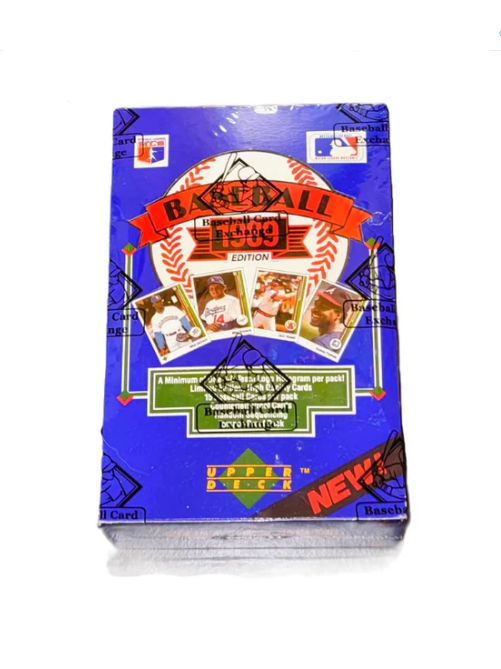Upper Deck
1989 Upper Deck High Numbers Pack (BBCE)
1989 Upper Deck High Numbers Pack (BBCE)
Couldn't load pickup availability
36 packs per box, 15 cards per pack
The landmark 1989 Upper Deck Baseball is a 800-card set released in two series. The first series (also known as the "Low-Numbers") consists of the first 700 cards, and was released to The Hobby in April 1989. The High-Number Series, which has both the 700 Low-Number cards, plus an additional 100 cards, was released in October, along with 100-card High-Number Factory Sets and 800-card full sets.
The set was the first "super-premium" brand in the Hobby as it was the first set that:
- Featured white paper stock
- Featured full color on both the front and the back of the card
- Carried a hologram on the reverse to protect against counterfeiting
- Was packaged in foil wrappers.
Subsets include Rookie Stars (#1-#27), 1988 Award Winners (#658-#663), 1988 Postseason Highlights (#664-#667), and Team Checklists (#668-#693) which were painted by Vernon Wells, Jr., the father of future Major League outfielder Vernon Wells III.
1989 Upper Deck is notable, of course, for card #1: The Star Rookie of Ken Griffey, Jr. Other rookies included Gary Sheffield, John Smoltz, Randy Johnson, (all, like Griffey, included in the "Star Rookie" subset) and Craig Biggio. Among the Hi-Series rookies are Tom Gordon, Steve Finley, Jim Abbott and Omar Vizquel.
Collectors should also note that many dealers consider that Upper Deck's "planned" production of 1,000,000 cards of each player was increased (perhaps even doubled) later in the year due to the explosion in popularity of the product.
The more significant variations involving changed photos or changed type are listed below. According to the company, the Dale Murphy RevNeg and Pat Sheridan "no position" cards were corrected very early, after only two percent of the cards had been produced. Similarly, the Gary Sheffield "upside-down SS" was corrected after 15 percent had been printed; Gary Varsho, Mike Gallego, and Bill Schroeder were corrected after 20 percent; and Brian Holton, Fred Manrique, and Herm Winningham were corrected 30 percent of the way through.
Cards with missing or duplicate holograms appear to be relatively common and are generally considered to be flawed copies that sell for substantial discounts.
Share


